Best Fence Height for Aussie Homes with Cats & Dogs

Essential Fence Height Guidelines for Australian Pet Owners
- Standard fence heights of 1.8m (6ft) are typically recommended for most Australian homes with pets
- Cats require specialized containment solutions like the Oscillot® system to prevent climbing
- Dogs' fence height requirements vary based on breed, size, and jumping ability
- Australian weather conditions should influence your fencing material choices
- DIY cat-proof fence systems can be installed on existing fences of at least 1.83m height
- Proper installation and regular maintenance ensure long-term effectiveness
Key Takeaways for Australian Pet Owners
| Pet Type | Minimum Fence Height | Recommended Solution |
|---|---|---|
| Cats Only | 1.83m (6ft) | Oscillot® system on existing fence |
| Small Dogs | 1.2m (4ft) | Standard fence with gap protection |
| Medium Dogs | 1.5m (5ft) | Sturdy fence with anti-dig measures |
| Large Dogs | 1.8m (6ft) | Reinforced fence structure |
| Athletic Dogs | 2m+ (6.5ft+) | Extra height with angled top section |
| Both Cats & Dogs | 1.83m (6ft) | Oscillot® system + breed-appropriate reinforcement |
Introduction: Fencing Challenges for Australian Pet Owners
Australia has unique challenges for keeping pets safe in your yard. Our different climates and native wildlife can tempt pets to escape, so choosing the right fence height and system is really important to keep your cats and dogs inside your property.
Australian statistics show that thousands of pets go missing each year after escaping from yards with poor fencing. Many of these escapes could be prevented with proper containment systems that work for both cats and dogs. In this guide, we'll look at the best fence heights for Australian homes with pets, focusing on solutions that work for both cats and dogs.
Discover the essential features of effective cat-proof fencing systems that can keep your feline friends safe while allowing them to enjoy the outdoors.
Pet containment is a big deal in Australia because our ecosystem means escaped pets face many dangers - from venomous snakes and busy roads to fights with native wildlife. Many local councils now have strict rules about keeping pets contained, with big fines for owners whose pets are found wandering. These rules are getting stricter to protect our native wildlife, especially from cats, which can harm local bird and small mammal populations when they roam freely.
Understanding Cat Behavior and Escape Methods
Cats are naturally good at climbing and jumping, which makes them hard to keep inside normal fences. A typical house cat can jump up to 1.5 meters high and climb almost any surface that their claws can grip.
In Australia, where we have many native birds and wildlife that might interest even well-behaved cats, standard fencing just isn't enough. A regular 1.8m fence that might keep most dogs in will be easily climbed by most cats. This is why special cat containment systems like our Oscillot® cat-proof fence systems are important for Australian cat owners who want their pets to enjoy the outdoors safely.
The Oscillot® system works by creating a barrier that cats can't grip, stopping them from climbing over your existing fence. The system has special paddles that spin when a cat tries to climb, making it impossible for them to get the grip they need to get over the fence.
Cat behavior experts have studied how cats climb and escape, finding that cats use a three-step process when climbing a fence: they jump to get started, use their claws to grip the fence, and then push with their back legs to move upward. The Oscillot® system targets the second step, creating a surface that spins when touched, preventing cats from getting the grip they need to keep climbing. This doesn't hurt the cat but teaches them the fence can't be climbed, and they usually stop trying after a few attempts.
Dog Fence Height Requirements by Breed and Size
Unlike cats, dogs vary a lot in their jumping and climbing abilities based on their breed, size, and personality. Here's a simple guide for Australian dog owners:
Small Breeds (Under 10kg)
- Minimum recommended fence height: 1.2m (4ft)
- Examples: Maltese, Chihuahua, Toy Poodle
- Special considerations: Small gaps in fencing that larger dogs can't fit through
Medium Breeds (10-25kg)
- Minimum recommended fence height: 1.5m (5ft)
- Examples: Border Collie, Kelpie, Staffordshire Bull Terrier
- Special considerations: Many Australian medium breeds are working dogs with high energy and intelligence
Large Breeds (25kg+)
Minimum recommended fence height: 1.8m (6ft)
Examples: German Shepherd, Labrador, Rottweiler
Special considerations: Strength as well as height; fence construction must be sturdy
Athletic/High-Energy Breeds
Recommended fence height: 2m+ (6.5ft+)
Examples: Australian Cattle Dog, Greyhound, Belgian Malinois
Special considerations: May need additional anti-jump features at the top of the fence
For dogs that like to dig, it's also important to extend your fence below ground level or add concrete at the base to prevent escape by tunneling – a common problem in Australia's softer soils, especially after rain.
Explore our range of plastic cat-proof fence kits that can be adapted to create effective containment for both cats and dogs in Australian homes.
Vets who study animal behavior note that certain Australian breeds have special containment needs because of their working background. For example, cattle dogs and kelpies were bred to work on their own and cover large areas, making them more likely to try to escape if they're bored. These breeds often need higher fences (2m+) with extra features like rollers or inward-angling tops to prevent jumping. Also, many sporting and hunting breeds like Pointers and Vizslas can jump surprisingly high, needing taller fences than you might expect based just on their size.
The Ideal Combined Solution for Australian Homes with Both Cats and Dogs
For homes with both cats and dogs, finding one fencing solution that works for everyone can be tricky. The good news is that a well-designed system can work for both types of pets.
The recommended approach for Australian homes with both cats and dogs is:
1. Start with a base fence height of at least 1.83m (6ft) – this is the minimum height recommended for our Oscillot® cat containment system
2. Ensure the fence material and construction are appropriate for your dog's size and strength
3. Add the Oscillot® system to the top of the fence to prevent cats from climbing out
4. Consider ground-level reinforcements for dogs that dig
5. Pay special attention to gates and access points, which are common weak points
This combined approach creates a secure environment for both your cats and dogs, allowing them to enjoy your Australian backyard safely.
Homes with multiple pets face special containment challenges, as the solution must stop different escape behaviors at the same time. Animal behavior researchers have found that in homes with both cats and dogs, pets often learn escape tricks from each other. For example, a dog might damage a section of fence that a cat then uses to escape, or a cat's climbing might inspire a dog to try similar moves. The Oscillot® system works well in these situations because it stops the climbing behavior that both animals might try, while the solid fence base handles the jumping and digging behaviors more common in dogs. A combined solution also means you don't need separate outdoor areas for different pets, letting the whole family enjoy the backyard together.
Australian Climate Considerations for Pet Fencing
Australia's different climate zones create special challenges for pet fencing. From the tropical north to the cooler south, where you live should affect your fencing choices.
Northern Australia (Tropical/Sub-tropical)
High humidity and rain can make wooden fences warp or rot, while metal parts may rust quickly. Termites can damage wooden structures in these regions. Our Oscillot® plastic cat-proof fence kits are very durable in these tough conditions, resisting moisture and insect damage.
Central Australia (Arid/Desert)
Extreme heat and sun exposure can damage many materials, and the loose soil may make it easier for dogs to dig. In these regions, UV-resistant materials and deep fence footings are essential. Our systems are designed for these harsh conditions, using materials that can handle intense sun.
Southern Australia (Temperate)
Changing seasons require versatile fencing that can handle winter storms and summer heat. Our standard Oscillot® systems with galvanized parts work well year-round in these changing conditions, staying strong through all seasons.
All our Oscillot® cat-proof fence kits are designed for Australian conditions, with weather-resistant materials that stand up to our harsh climate.
Materials experts have tested fence components in Australian conditions and found that UV radiation in sunnier areas can damage standard plastics by up to 30% within just two years of outdoor exposure. That's why all Oscillot® parts are made with UV-stabilized plastics that resist this damage, staying strong even after years in harsh Australian sunlight. Our metal parts also get special treatments to resist rust in coastal areas, where regular galvanized materials might start to deteriorate within months of installation. These climate-specific engineering features are important for ensuring long-term performance across Australia's diverse environmental zones.
DIY Installation of Cat-Proof Fence Systems in Australia
Many Australian homeowners like to install their own pet containment systems. Our Oscillot® cat-proof fence kits are designed for easy DIY installation on existing fences.
Key Installation Considerations:
1. Fence Preparation: Make sure your existing fence is in good shape and at least 1.83m (6ft) tall
2. Tools Required: Basic household tools are enough for most installations
3. Time Investment: Most homeowners can finish a standard installation in a weekend
4. Measuring Your Perimeter: Accurate measurement is important for ordering the right kit size
Our 50 metre DIY Oscillot kit is one of our most popular options for average Australian suburban properties, providing enough coverage for a standard backyard while offering excellent value.
Each of our DIY kits comes with complete installation instructions and all necessary parts. The system works by creating a physical barrier that stops cats from getting the grip they need to climb over the fence, while being nearly invisible from a distance, keeping your property looking nice.
Installation experts suggest starting with a good check of your existing fence, looking carefully at its structure and finding any weak spots that might need fixing before adding the Oscillot® system. Common problems include loose palings, rotted posts, or sections that have started to lean – all of which should be fixed before installation. When measuring your perimeter, it's good to add about 10% extra to your calculation to account for corners, gates, and possible measurement errors. Most DIY installers find that the hardest part of installation is keeping consistent height and alignment around the entire perimeter, especially on fences with uneven tops or those that follow sloping ground. Using a laser level can really help with accuracy in these situations, resulting in a more effective and better-looking installation.
Cost Comparison: Standard Fencing vs. Pet-Specific Solutions
When planning your budget for pet containment in Australia, it's important to think about both the initial installation costs and the long-term value.
Standard Fence Installation (1.8m height)
- Timber paling fence: $80-150 per meter
- Colorbond steel: $100-200 per meter
- Chain link/wire: $70-120 per meter
- Key limitation: Standard fencing alone will not contain cats
Oscillot® Cat Containment System
30 metre DIY kit: $1,040.00
50 metre DIY kit: $1,485.00
90 metre DIY kit: $2,365.00
110 metre DIY kit: $3,079.00
Key advantage: Works with your existing fence to create a complete containment solution
When you think about the potential costs of lost pets – including council fines for roaming animals in many Australian areas, vet bills for injured pets, and the emotional stress of a missing beloved pet – investing in a proper containment system like Oscillot® plastic cat-proof fence kits is really good value.
All our systems come with a 3-year manufacturer's warranty and are backed by our 60-day money-back guarantee, giving you peace of mind for your investment.
Financial experts who specialize in home improvements suggest that pet containment systems should be judged not just on their initial cost, but on their total cost over a 5-10 year period. When looked at this way, specialized systems like Oscillot® often turn out to be cheaper than seemingly less expensive options that need frequent repairs or replacement. There are also significant hidden costs related to pet escapes that should be considered. Australian pet owners spend about $38 million each year on vet treatments for injuries that pets get while roaming, not including the emotional stress and time spent searching for missing pets. Some insurance companies now even offer discounts for homes with proper pet containment systems, recognizing the reduced risk these systems provide.
Adapting Fence Solutions for Australian Urban vs. Rural Properties
The requirements for pet containment vary a lot between urban and rural Australian properties.
Urban Australian Properties
Usually have smaller perimeters (30-90 metres), often have existing boundary fences, and may have council rules limiting fence heights. Privacy concerns often affect fence design in urban areas. Our 30 metre DIY Oscillot kit or 50 metre DIY Oscillot kit are perfect for average suburban blocks, fitting nicely onto existing fences without changing how they look too much.
Rural Australian Properties
Rural properties have different challenges with larger perimeters that may need extensive fencing, more wildlife interactions, and the need to keep pets within part of the property rather than the entire boundary. Our 180 metre cat-proof fence kit is great for larger properties or creating secure areas where pets can roam safely without needing to fence the entire property.
For rural properties, it's often more practical and cost-effective to create a secure enclosure for pets rather than fencing the entire property boundary. This approach lets pets enjoy outdoor time safely while maintaining the natural environment of your property.
Urban planning experts note that pet containment in urban settings needs to balance security with community appearance. In densely populated areas, fence design must consider not just function but also neighborhood character and visual impact. Many urban councils now include specific rules for pet containment in their planning codes, often favoring solutions that maintain street appeal. The Oscillot® system has become popular in urban environments because it provides effective containment without the institutional look of traditional solutions like chain-link toppers or electric fencing. In rural settings, wildlife experts recommend creating designated pet zones rather than trying to secure entire properties, which can disrupt wildlife corridors and natural habitats. This zoned approach is also usually more economical and practical to maintain over time.
Regulatory Considerations for Pet Fencing in Australia
Australian pet owners should know about the various regulations that might affect their fencing choices:
Local Council Requirements
Maximum fence heights usually range from 1.8-2.1m in most residential areas, with requirements for how far fences must be from property boundaries, restrictions on materials and design in certain areas, and special rules in some historic neighborhoods. It's important to check with your local council before making big changes to your fencing.
State-Specific Cat Containment Laws
Several Australian jurisdictions have cat containment regulations. The ACT requires cat containment in certain suburbs, Victoria has some councils with cat curfews requiring nighttime containment, and Western Australia has several councils requiring 24/7 cat containment. These regulations continue to grow as awareness increases about how roaming cats affect native wildlife.
Body Corporate Restrictions
Apartment and townhouse complexes often have specific rules about pet containment and may not allow certain fence modifications. Our Oscillot® system works well in these situations as it can be installed without major structural changes.
Our Oscillot® system is designed to work within these regulatory frameworks, adding cat containment capability to existing fences without typically exceeding height restrictions or requiring major structural changes that might need council approval.
Environmental policy experts predict that cat containment regulations will continue to spread across Australia in the coming years, with many councils moving from voluntary to mandatory requirements. Recent ecological studies have measured the impact of domestic cats on native wildlife, with estimates suggesting that even well-fed pet cats kill an average of 186 animals per year in Australia. These findings have sped up regulatory changes, with several states now developing standardized approaches to cat containment. Property law specialists advise that homeowners should consider future-proofing their properties by installing compliant containment systems now, even in areas where regulations are still voluntary, as retrofitting to meet new requirements can be more expensive than including appropriate solutions during initial fence installation or upgrades.
Maintenance and Longevity of Pet Fencing in Australia
To make sure your pet containment system keeps working effectively over time, regular maintenance is essential, especially given Australia's harsh climate conditions.
Maintenance Tips for Oscillot® Systems:
1. Check all components every three months
2. Clear any debris that might stop paddle rotation
3. Make sure fence posts remain secure and stable
4. Check that all mounting brackets are tight
5. Look for any UV damage or weathering
Expected Longevity:
Our Oscillot® systems are built to last with high-quality materials specifically chosen for Australian conditions. All components are designed to withstand our harsh climate, from tropical downpours to desert heat. We provide a 3-year manufacturer's warranty for peace of mind, but many installations continue to work effectively well beyond this period with proper maintenance.
Regular maintenance not only extends the life of your pet containment system but also ensures it keeps working effectively to keep your pets safe. Our cat-proof fence kits are designed with durability in mind, using materials selected specifically for their ability to handle Australian weather conditions.
Materials engineering experts recommend creating a seasonal maintenance schedule that addresses the specific environmental challenges of each time of year. In spring, focus on checking for winter storm damage and making sure all components are secure after potential expansion and contraction cycles. Summer maintenance should include checking for UV damage and ensuring that heat hasn't caused warping or distortion of components. Autumn is ideal for clearing accumulated debris before winter, while winter maintenance should concentrate on checking drainage around fence footings to prevent erosion. Professional installers note that the most common point of failure in pet containment systems is not the specialized components themselves, but rather the underlying fence structure. Regular inspection of posts, rails, and palings is therefore just as important as maintaining the containment system itself.
Combining Aesthetic Appeal with Effective Pet Containment
Many Australian homeowners worry that effective pet containment might make their property look bad. With Oscillot®, you don't have to choose between safety and looks.
Aesthetic Benefits of Oscillot® Systems:
1. Low profile design is barely visible from a distance
2. Available in multiple colors to match your existing fence (Gun Metal Grey, Koala, etc.)
3. No unsightly netting or wire toppers
4. Maintains the clean lines of your existing fence
5. Works with virtually any fence material (timber, Colorbond, brick, rendered walls)
Many of our customers say their Oscillot® system is almost invisible from street level, keeping their home looking nice while providing effective pet containment. The system's discrete design makes it especially popular in neighborhoods with strict appearance guidelines or heritage considerations.
Learn more about creating secure outdoor spaces for cats that enhance your property's appearance rather than detracting from it.
Landscape architects who specialize in pet-friendly design emphasize that the most successful containment solutions are those that blend seamlessly with the overall property look. They recommend considering the containment system as part of the broader landscape design rather than as a separate functional element added later. This integrated approach allows for complementary plantings, hardscape elements, and color schemes that can help hide or enhance the containment components. For example, strategic placement of ornamental grasses or climbing plants near fence lines can help soften the visual impact of containment systems while actually making them more effective by discouraging pets from approaching certain sections. The Oscillot® system's color options were specifically developed with Australian landscape designers to complement the most common fence colors and materials used throughout the country.
Conclusion: Making the Right Fence Height Choice for Your Australian Home
Choosing the right fence height and containment system for your Australian home depends on several factors, including the types of pets you have, your property's characteristics, local regulations, and your personal preferences.
For most Australian homes with both cats and dogs, we recommend:
1. A minimum fence height of 1.83m (6ft)
2. An Oscillot® cat containment system installed at the top
3. Appropriate ground-level reinforcement for dogs that dig
4. Regular maintenance and inspection
Our range of cat-proof fence kits offers solutions for properties of all sizes, from small urban courtyards to large rural properties. With options ranging from our 30 metre DIY kit at $1,040.00 to our 180 metre kit at $4,049.00, there's a solution for every Australian home and budget.
All our systems are 100% Australian made and owned, backed by a 3-year manufacturer's warranty and a 60-day money-back guarantee. This shows our confidence in providing effective, durable pet containment solutions designed specifically for Australian conditions and pet behaviors.
By investing in the right fence height and containment system, you can create a safe outdoor environment where your pets can enjoy Australia's beautiful climate while staying securely within your property boundaries.
Pet behavior experts and vets consistently emphasize that providing safe outdoor access greatly improves pets' quality of life, reducing behavior problems associated with confinement and promoting physical and mental health. A properly designed containment system allows pets to experience natural stimulation – feeling grass under their paws, enjoying fresh air, and watching the world around them – while keeping them protected from the many hazards that exist beyond your property boundaries. The peace of mind that comes from knowing your beloved pets are safe at home is perhaps the most valuable benefit of all, letting you enjoy your relationship with your pets without constantly worrying about escape and its potential consequences.
Ready to Secure Your Australian Home for Your Pets?
Browse our complete range of Oscillot® cat-proof fence kits to find the perfect solution for your property. With options for every fence type and property size, we have everything you need to create a safe outdoor environment for your pets.




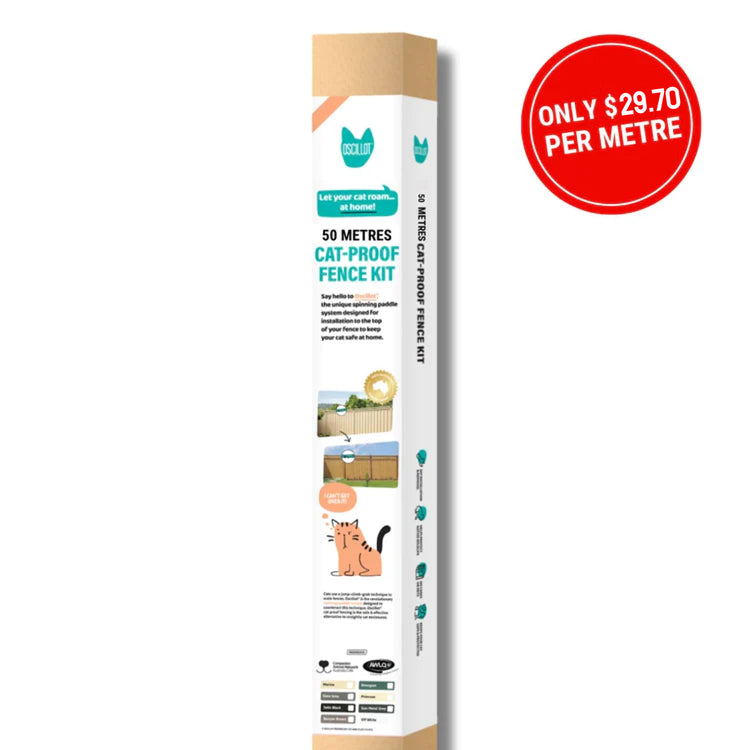





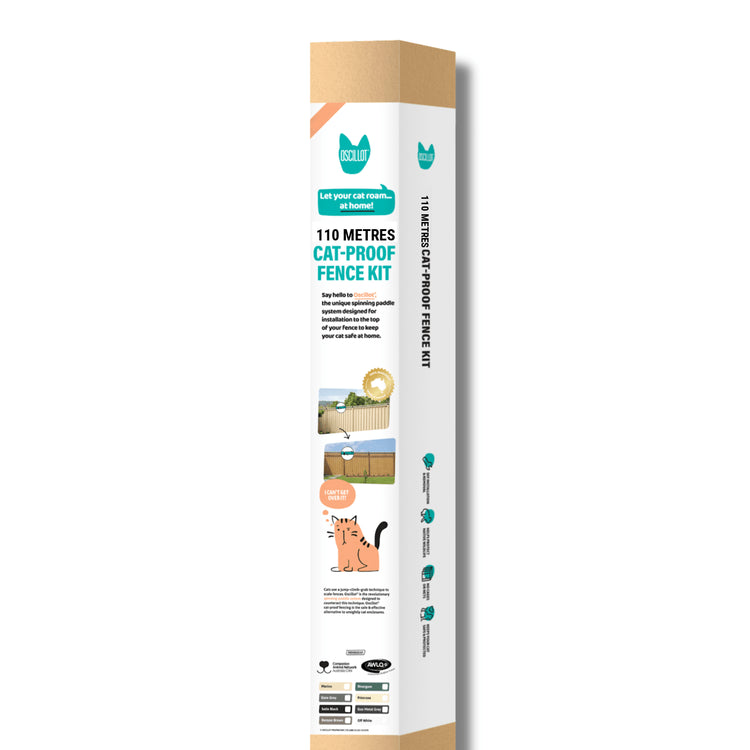



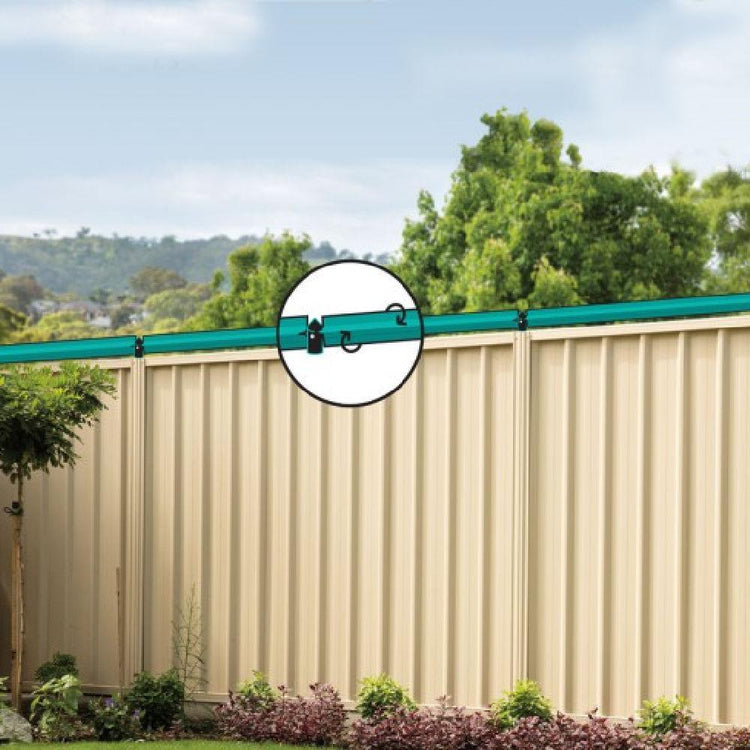

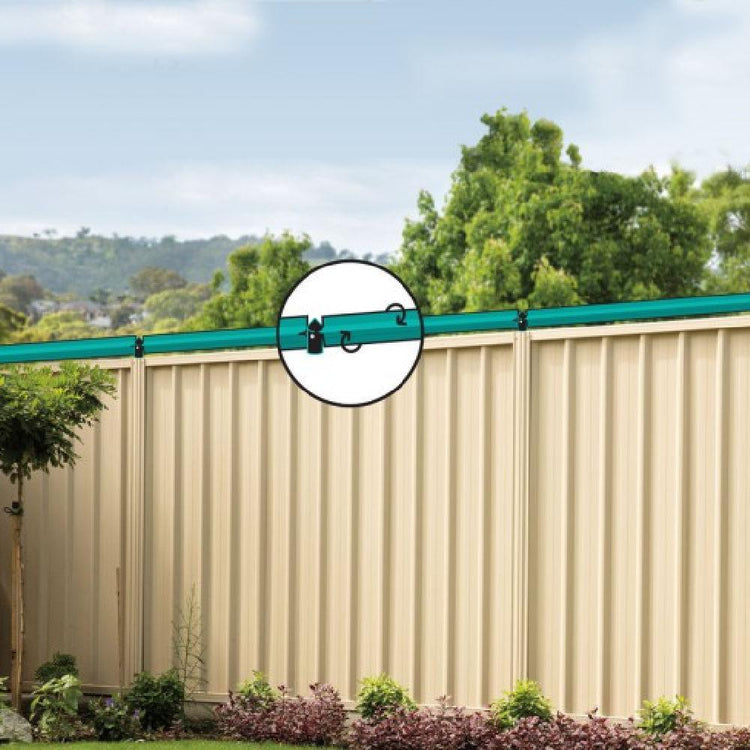

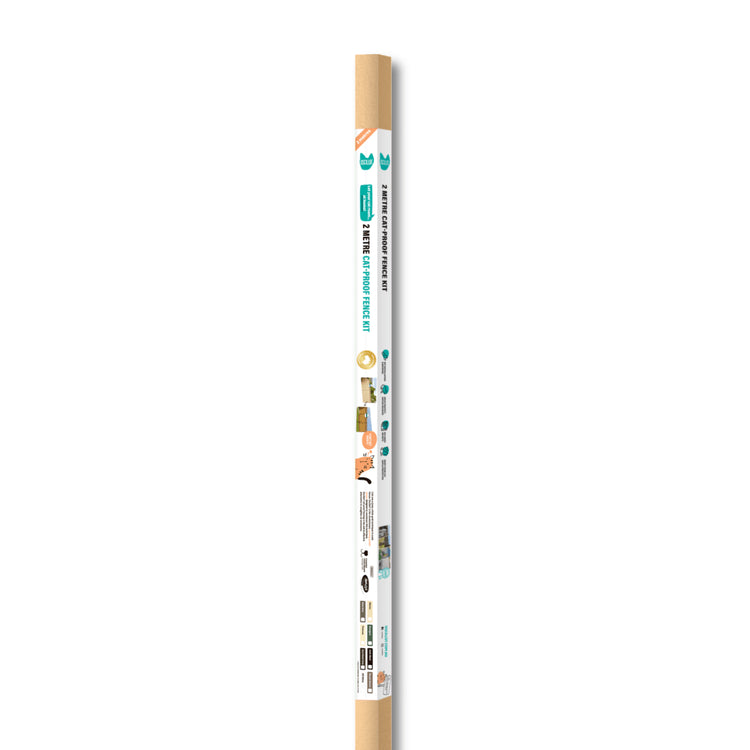
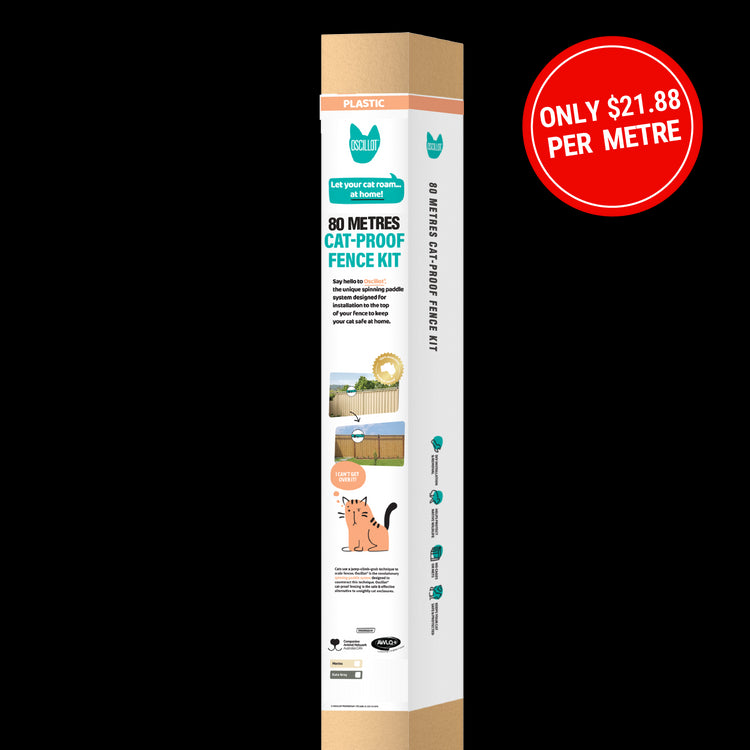



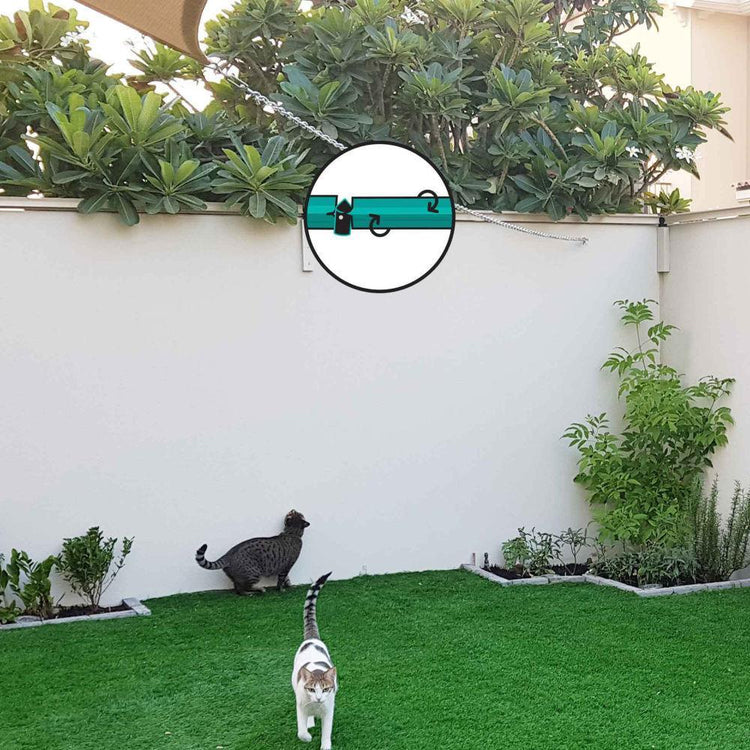

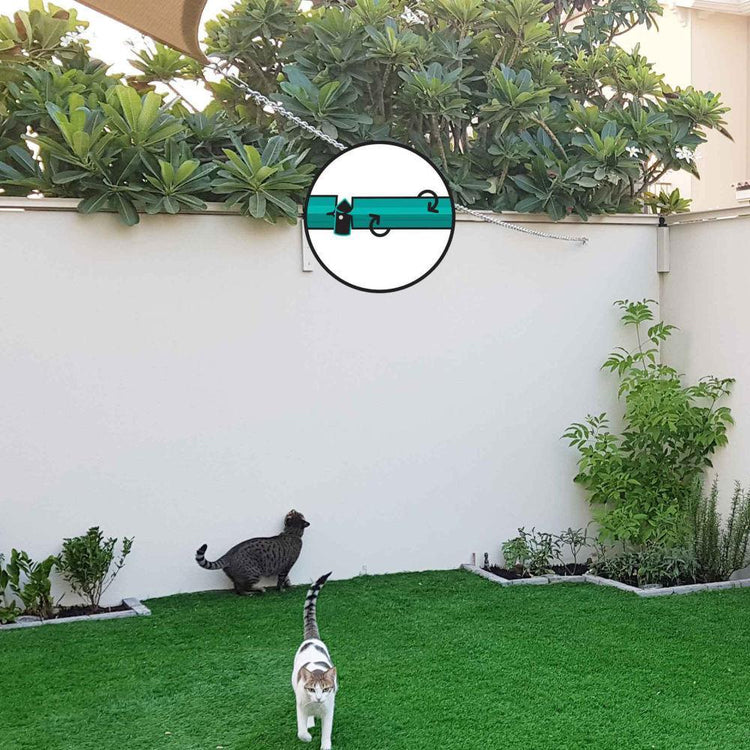

Leave a comment